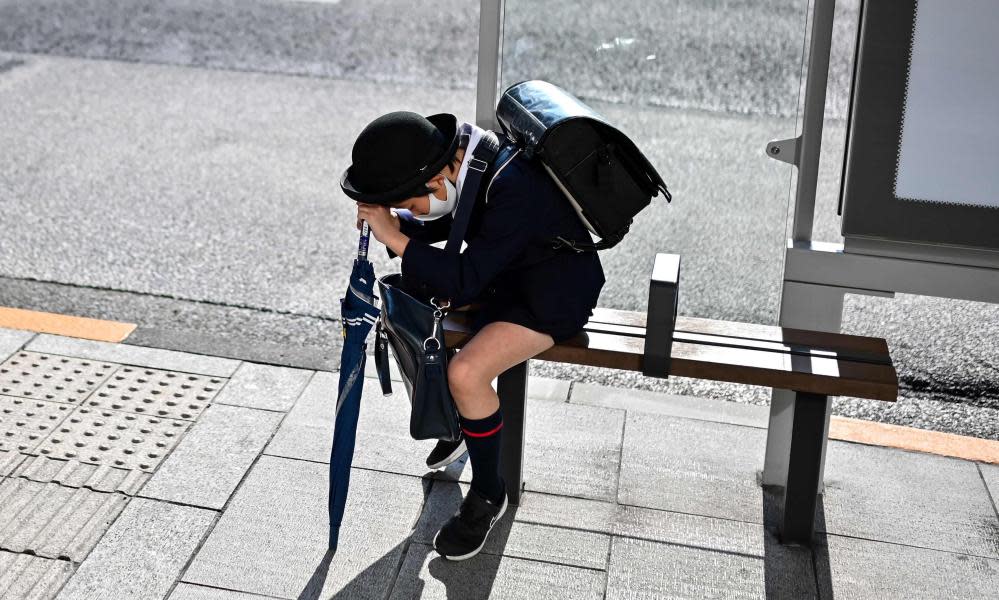Old-school backpacks too heavy, Japan’s pupils complain

It’s a familiar sight every weekday morning and afternoon all over Japan: children as young as six creaking under the strain of a leather backpack crammed with textbooks.
The randoseru – a Japanese derivation of ransel, the obsolete Dutch word for backpack – is a fixture of primary school education, a repository for everything a child needs to get through a day at school.
But now the children themselves are speaking out, complaining that their backpacks are so heavy that they leave them with sore backs and shoulders.
More than 90% of children aged 6-12 who use randoseru say the weight is a problem, according to a recent survey by Footmark, a Tokyo-based manufacturer of swimwear for schoolchildren.
Related: Campaigners criticise Japan firm selling whale meat from vending machines
In a report on the survey of 1,200 parents and their first-, second- and third-grade children, the Yomiuri Shimbun said 93% of pupils thought their bags were too heavy – an opinion shared by 90% of parents.
The bags, initially introduced to encourage children to walk to and from school, are made to last pupils through their first six years of compulsory education.
But their durability and roomy proportions come at a price.
According to the Yomiuri, the average weight of a randoseru filled with books and other paraphernalia is 4.28kg, up from 3.97kg in 2022. Some children struggle with backpacks weighing more than 10kg, the newspaper added.
Almost one in four children who mentioned the weight issue complained of shoulder or back pain, while 65% of all respondents said they would like to trade in their randoseru for something lighter.
Parental complaints about the items have traditionally centred on their hefty price tag. They cost an average of ¥56,425 (£353/$425) in 2022, according to a survey by the Randoseru Kogyokai industrial association. The price has risen nearly ¥20,000 over the past decade.
Related: Wave of ‘sushi terrorism’ grips Japan’s restaurant world
Originally used by Japanese foot soldiers, randoseru were first taken up by schoolchildren in the late 1800s. Today’s versions, made from a combination of soft and hard leather, come in an array of colours, although red remains the most popular among girls, with black the norm among boys.
Some local education authorities have addressed the weight issue by allowing children to leave their textbooks in their classrooms overnight – particularly during the humid summer months – despite concern it will discourage them from doing their homework.
In 2022, the town of Tateyama asked a maker of outdoor clothing to come up with a lighter backpack after the mayor voiced concern about the rising cost of conventional randoseru. They will be handed out to local children free of charge in time for the start of the academic year this April, the Asahi Shimbun reported.

 Yahoo Movies
Yahoo Movies 
